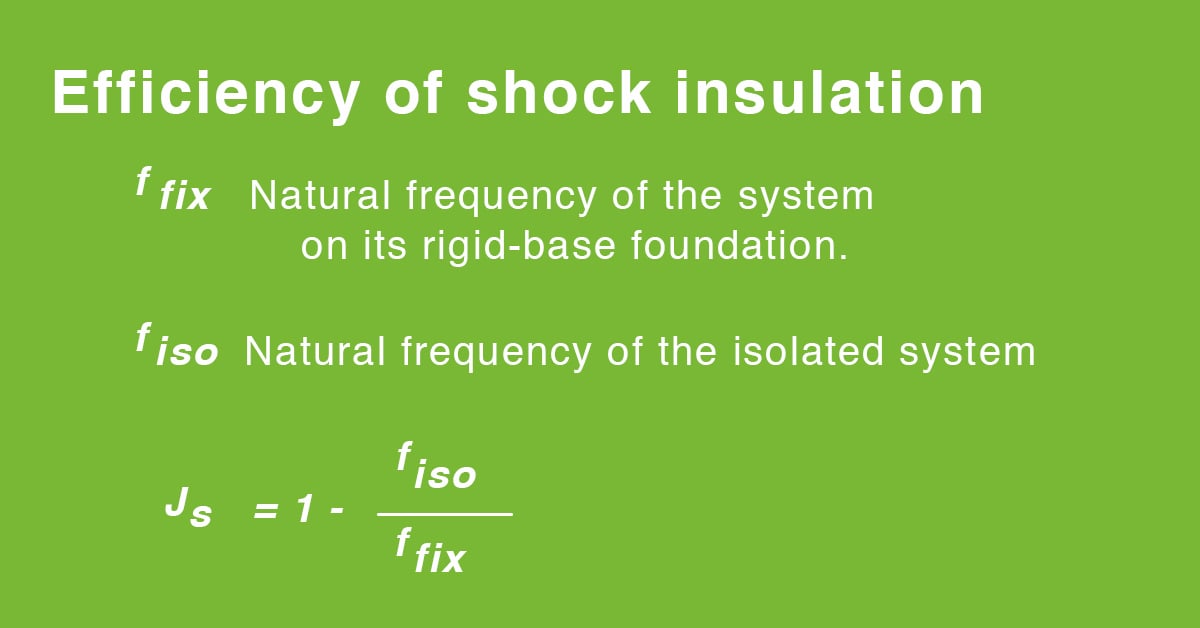

There are two main kinds of vibration isolation: source/sender and receiver isolation. Source isolation is the vibration isolated mounting of a machine in order to reduce its pulse or sinusoidal vibration forces. This protects objects in the environment such as adjacent machines, the building and people from the disturbing forces. The special task here is to keep the movement of the now elastically mounted machine within its operational limits.
In the case of receiver isolation it is necessary to protect vibration-sensitive equipment (e.g. measuring machines) from interfering ground vibrations. The production or characterization of ever smaller components, down to structures consisting of a few atoms or molecules, make heavy demands on facilities and their vibration isolation.
The effect of vibration isolation depends mainly on the ratio of the disturbance frequency or excitation frequency to the natural frequency of the insulator (matching ratio), and its damping. With source isolation the excitation frequency is the machine speed or stroke rates, with receiver isolation disturbing ground vibrations. Generally it can be said that the lower the natural frequency of the insulator the better the efficiency of the insulator, i.e., the larger the ratio of disturbing frequency is compared to the natural frequency. The resulting graph shows that an isolating effect only occurs when the value of the harmonizing ratio is greater than √¬2. At smaller values an amplification (resonance magnification) of the disturbing force may also occur.
Transmission factor Vs of the vibration isolation without damping:
.png)
The transmission factor Vp taking into account the damping ratio D is:
.png)
.png)
Usually the goal is a matching ratio of between 3 and 4, whereby 3 is considered the technical lower limit and 4 the economic upper limit. A matching ratio larger than 4 cannot normally be justified from an economic perspective because the material expense would increase above average compared to the degree of isolation.
Essential characteristics of shock are its duration, its distribution and its intensity. With shock isolation, the dynamic disturbing pulse, consisting of a high power peak over a short period of time, generated e.g. by presses, stamps or hammers, is changed to a longer lasting pulse with smaller forces. Unlike periodically excited vibrations the isolated system oscillates at the excited natural frequency of the isolated system and not in accordance with the excitation, for example, the number of strokes. This can be compared with a tuning fork, which always produces a sound of a constant pitch.
